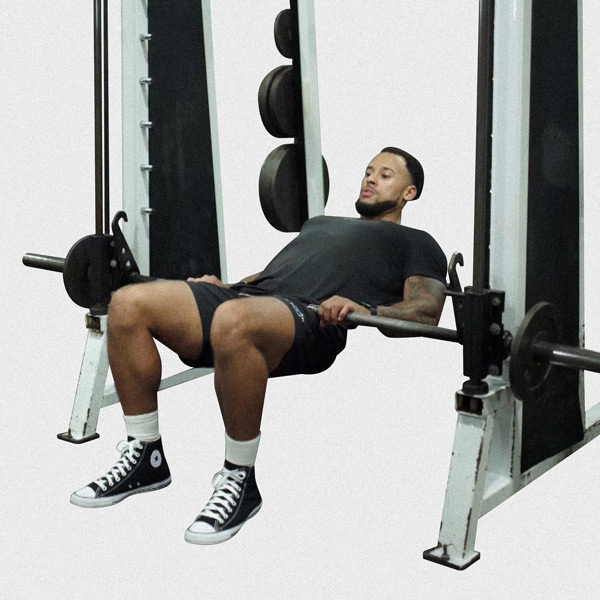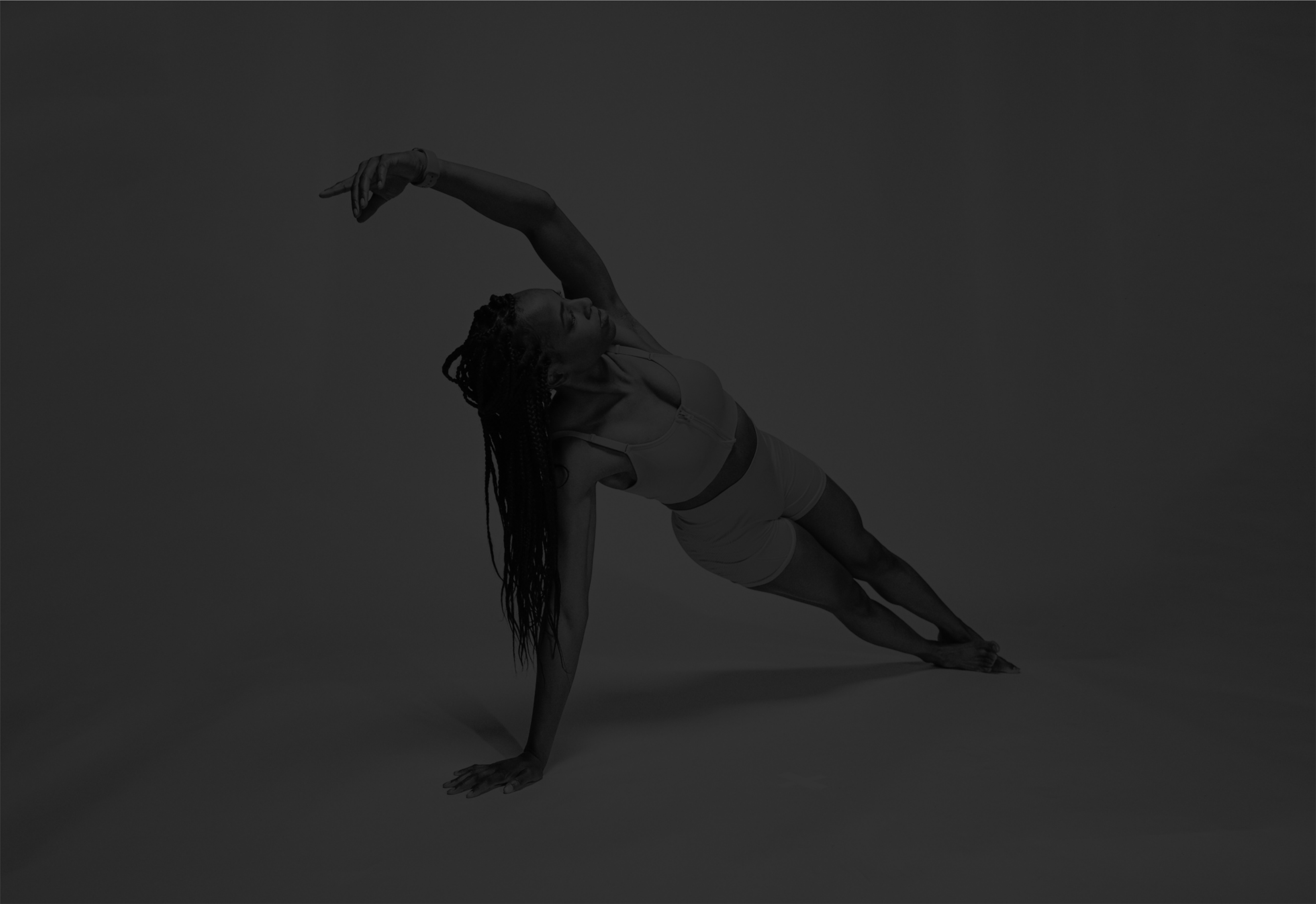Dumbbell Hip Thruster
Dumbbell hip thrust that targets glutes and hamstrings to build lower body strength and hypertrophy; performed with upper back on a bench for support and scalable by adding weight.
About Exercise
Equipment
Dumbbells, Flat Bench
Difficulty
2/5 • Intermediate
Primary Muscle Groups
Glutes
Secondary Muscles
Quads, Adductors, Lower Back, Abs
Popularity Score
8
Goals
Training Style
Setup Requirements
Requires Rack
No
Requires Bench
Yes
Requires Spotter
No
Space Needed
Small
Noise Level
Low
Muscle Breakdown
View Muscle MapGlutes
10/10Glute Max, Glute Medius
Hamstrings
7/10Biceps Femoris
Quads
4/10Adductors
3/10Lower Back
3/10Erector Spinae
Abs
3/10Programming
Typical Rep Range
8-15 reps
Rest Between Sets
60-90 seconds
How to Perform
Sit on the floor with upper back against a bench edge, knees bent, feet flat hip-width apart. Place a dumbbell across your hips and hold it steady.
- Engage core and drive hips up through heels.
- Squeeze glutes to lift until torso and thighs align.
- Pause briefly at top with full hip extension.
- Lower hips slowly toward floor with control.
- Keep chin tucked and spine neutral throughout.
Coaching Tips
Form Cues
- Drive through heels
- Squeeze glutes hard
- Keep core tight
- Neutral spine always
- Knees at 90 degrees top
Breathing
Inhale as you lower hips, exhale forcefully as you drive up and squeeze glutes.
Tempo
2-1-1
Range of Motion
Lower hips until just above floor; extend fully so shoulders, hips, and knees form a straight line without arching lower back.
Safety
Safety Notes
- Avoid if acute lower back or hip pain
- Use pad under dumbbell for comfort
- Ensure bench is stable
- Start light to master form
- Consult professional for injuries
Spotting
Spotting not typically needed; use safeties or partner to assist with dumbbell if heavy.
Common Mistakes
- Arching lower back
- Using momentum
- Feet too far forward
- Letting dumbbell shift
- Incomplete hip extension
When to Avoid
- Acute lower back injury
- Hip joint issues
Flexibility Needed
- Adequate hip flexion
- Ankle dorsiflexion for foot placement
Build Up First
- Master bodyweight glute bridge
- Core stability competency
Also known as
DB Hip Thrust, Weighted Hip Thrust, Dumbbell Glute Bridge
Found this helpful?
Share your thoughts or help us improve this guide.
Similar Exercises

Barbell Hip Thruster

Barbell, Flat Bench
Glutes

Smith Machine Hip Thruster
Smith Machine, Flat Bench
Glutes

Dumbbell Thruster
Dumbbells
Quads, Shoulders

Bodyweight Single-Leg Hip Thruster
Flat Bench
Glutes

Dumbbell Single-Leg Hip Thrust
Dumbbells, Flat Bench
Glutes

Balance Trainer Single-Leg Hip Thruster
Balance Trainer, Flat Bench
Glutes

Dumbbell Sumo Thruster
Dumbbells
Quads

Kettlebell Hip Thruster
Kettlebell
Glutes

Dumbbell Snatch

Dumbbells
Glutes

Smith Machine Hip Thrust
Smith Machine, Flat Bench
Glutes


subscribe to our newsletter
Contact Us
hello@trainfitness.aiFind Us
130 Spadina Avenue, Toronto,
Ontario, M5V 0H4, Canada
©2025 All Rights Reserved
